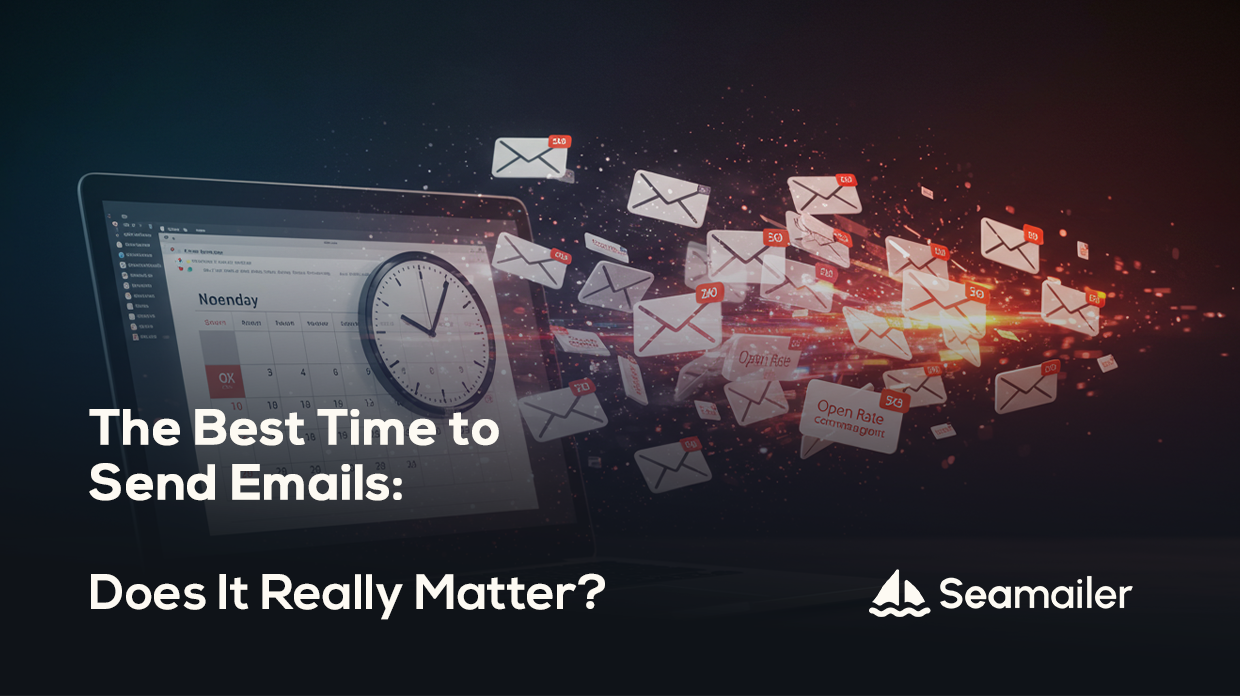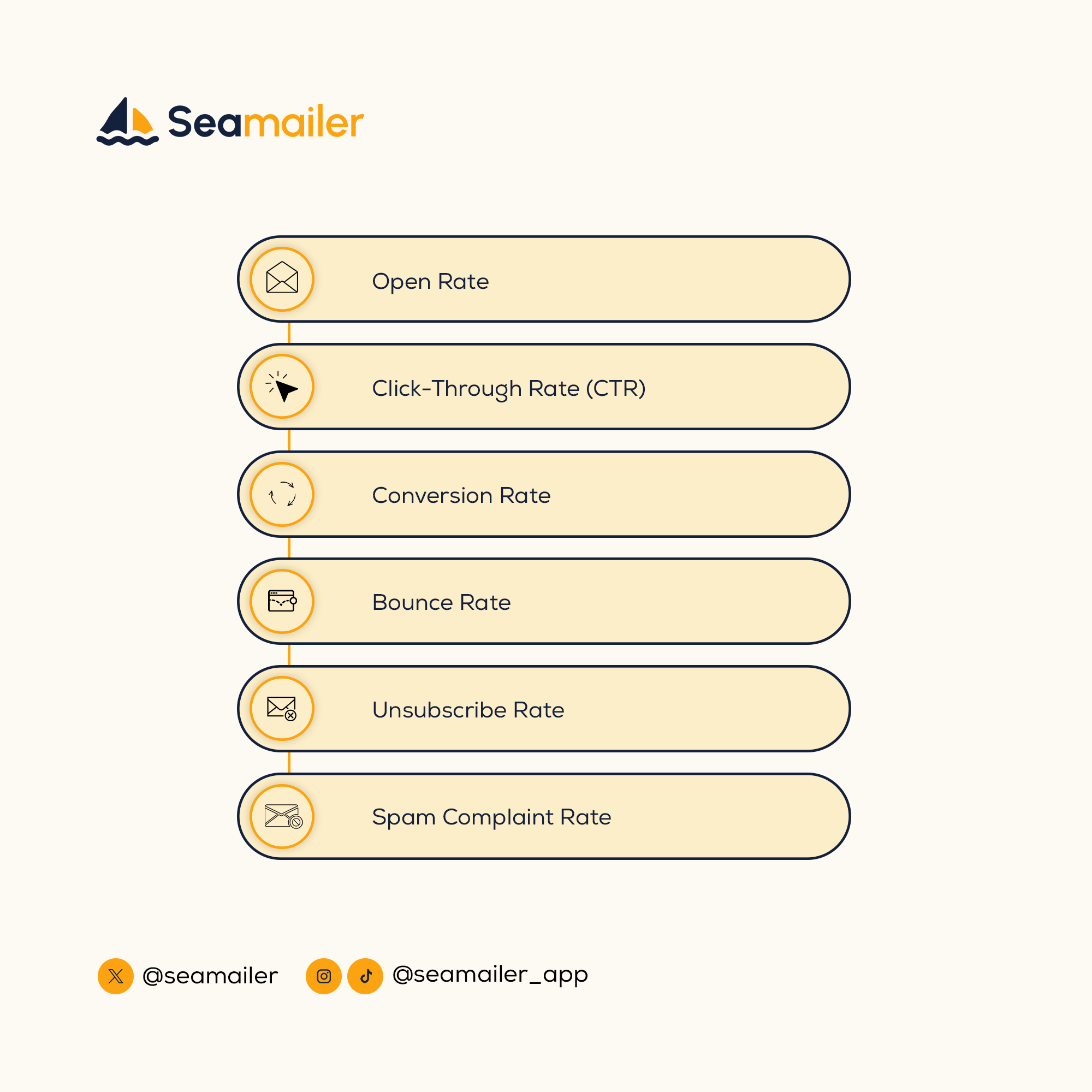The Best Time to Send Emails: Does It Really Matter?

Every email marketer has asked this question at least once: "What’s the best time to send an email?" It's a query that surfaces in countless strategy meetings, analytics reviews, and Google searches. But beneath the surface of this seemingly simple question lies a more nuanced reality.
Does timing really make or break your campaign? Or are we just placing too much faith in the clock and calendar?
The short answer: yes, timing matters. But not in the way you might think.
Let’s dig into the truth, backed by data, experience, and what we’ve seen across thousands of campaigns run through platforms like Seamailer.
The Myth of a Universal Best Time
One of the most common misconceptions in email marketing is the idea that there is one perfect time to send emails that works across all industries and audiences. Countless studies have tried to pinpoint this magic moment, often landing on times like:
- Tuesday at 10 AM
- Thursday around 8 AM
- Wednesday afternoons
These insights often come from aggregated data across industries, time zones, and business types. While they offer a useful starting point, they lack the precision needed to drive consistently high results in your specific context.
What the Data Says (and Doesn’t Say)
Let’s look at what various reports over the years have shown:
- HubSpot: Emails sent on Tuesday between 9 AM and 11 AM see the highest open rates.
- Campaign Monitor: Mid-morning on weekdays tends to perform well.
- Mailchimp: Tuesday and Thursday mornings are most effective.
But here’s the thing: these conclusions are based on averages. And the problem with averages is that they can mislead.
Let’s say you're targeting night-shift healthcare workers or digital nomads in different time zones. Tuesday at 10 AM may be their version of 3 AM.
The Audience is Everything
Instead of chasing "perfect timing," chase audience behavior.
Consider these segments:
- B2B professionals: Tend to check email early in the day, especially before meetings ramp up.
- E-commerce shoppers: Often browse in the evenings or on weekends.
- Gen Z: May engage more on mobile, late at night.
- International teams: Are scattered across time zones and require segmented delivery.
Understanding your subscribers' daily rhythms is more valuable than following a generic chart.
The Role of Time Zones
This one’s easy to overlook but critical. Sending an email at 9 AM EST means it's hitting inboxes at 6 AM PST. If your list includes both coasts (or multiple countries), this can tank your engagement.
Smart platform like Seamailer let you send based on the recipient’s local time zone, solving this problem elegantly.
It’s Not Just About Open Rates
Too often, we focus solely on open rates when judging timing. But that’s just one piece of the puzzle.
You should also consider:
- Click-through rate (CTR): When are readers most likely to engage?
- Conversion rate: When do they have the time and mindset to act?
- Unsubscribe/bounce rates: Is your timing contributing to fatigue?
A campaign with lower open rates but higher conversions might be more successful overall. Context matters.

Testing Beats Guessing
If you are serious about optimizing timing, there’s only one real way to do it: test.
Start with A/B testing. Platform like Seamailer allow you to run tests on:
- Different days of the week
- Morning vs. afternoon
- Weekdays vs. weekends
Track not just opens, but downstream metrics like clicks and sales.
Over time, patterns will emerge. And they might surprise you.
Case Study: When Saturday Won
One Seamailer user, an independent creator with a 25,000-subscriber list, assumed weekdays were best. But after testing weekend sends, they found Saturday evenings delivered 30% more clicks.
Why? Their audience was mostly hobbyist designers with busy day jobs. Weekends were when they had the time (and headspace) to read longer content.
Without testing, they would’ve missed this goldmine.
Your Email Content Matters More Than the Clock
Let’s not ignore the elephant in the inbox: bad emails flop at any time.
You can send a message at the perfect moment, but if it’s:
- Irrelevant
- Too long
- Confusing
- Generic
...it won’t matter.
Strong emails, on the other hand, punch through noise even at suboptimal times. Focus on:
- Compelling subject lines
- Clear and scannable content
- Strong CTAs
- Personalization
These factors influence engagement more than the minute hand.
Segmentation and Personalization Trump Timing
Consider sending:
- Behavior-based triggers (e.g., cart abandonment, browsing history)
- Lifecycle emails (welcome series, renewal reminders)
- Interest-based newsletters
These emails perform well because they align with intent, not the clock.
Segmentation allows you to deliver relevance. Relevance beats timing every time.
AI and Predictive Send Time
Modern email platform like Seamailer offers AI-powered send-time optimization. This means your emails go out when each individual recipient is most likely to engage—based on past behavior.
It’s not a gimmick. It works. And it removes a lot of guesswork from your strategy.
So, What’s the Verdict?
Does the best time to send emails matter?
Yes—but only in the context of your audience, your content, and your goals. Chasing a universal "best time" is a losing game. Instead:
- Understand your audience deeply
- Segment your list
- Test different timing windows
- Use tools with time zone and AI optimization
- Focus on relevance and value
If you are doing those things right, your send time becomes just another lever—not the linchpin of success.
Conclusion
The best marketers don’t just follow trends. They test, learn, and adapt.
Start small. Test thoughtfully. And don’t let timing anxiety stop you from shipping great emails.
Seamailer is making it easier than ever to send smart, data-informed campaigns that reach people when it matters to them.
Because in the end, your timing only matters if your reader is ready.

